Talk about melangés…talk about Indonesia and its delicious patchwork of influences from all over Asia – peanut sauces and hot chilies from Thailand, Vietnamese nam pla (fish sauce) and terasi (shrimp paste), Indian spices, Chinese stir-fries… a conglomerate of tastes and techniques all rolled up.
More often than not, a typical Indonesian meal combines sweet, sour, hot and spicy, even throwing in a bit of punch. Some may find it too sweet but if it’s served right then you just love it.
Anyway, this weekend past, I got invited to a Braderie (dutch for fair) to celebrate Indonesia’s independence from Dutch rule (August 17th, 1949), conveniently close to where we live. Or so I thought till we arrived. To police. To no parking slots. To masses of beings… from all corners of the dutch earth. My kleine dorp (little village) was overflowing.
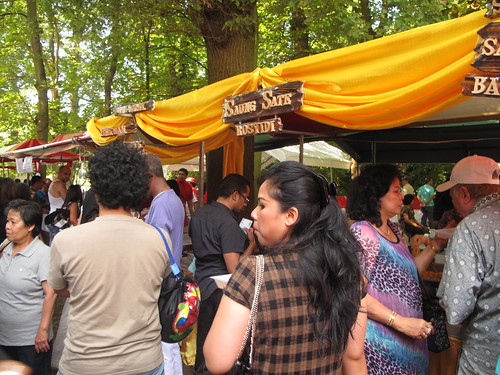
The Dutch won’t trade the Indo-cuisine for anything else. I mean what would life in the Netherlands be without Rijstafel (Rice Table)? What would they do without this spread of bowls of steaming white rice and up to 20 sides – sauces, condiments and vegetables all served at once? The textures, the combinations, the flavours and fragrances – lemongrass to Makrut limes, peanut sauces and coconut milk, black bean jellies and mung bean ones, ketchap manis and palm sugar to sweeten.
And when my nostrils were welcomed with tantalizing smells and my eyes watered with desire for the food, I knew I had found peace, amidst the chaos.
Did you know that Indonesian is fondly called the Emerald belt (De gordel van smaragd), because of the country’s numerous green islands which cover about 57% of the country?
We started with the Saté stalls, which had massive queues and when I sank my teeth into some Saté ayam, I knew why. Tender, delicately-spiced chicken, skewered and served with a light, runny, spicy (sweet chili) peanut butter sauce, garnished with crispy onion bits. Believably good.
Satés are typically made from a variety of meat: Chicken – Saté ayam, Lamb – Saté kambing, Beef – Saté daging and Rabbit – Saté kelinci. The meat is chopped up and marinated for about 4 hours in a spice mix which typically contains – salt, pepper, fresh ginger, galangale (laos), fresh garlic, coriander seeds, Makrut lime (halved, juiced and the halves put in the marinade), palm sugar or honey, ketchap manis (sweet soy ketchup) all made into a paste . Sometimes, people add more spices like star anise powder, Kencur (Kaempferia galanga, Lesser galangale) and chilies!
Of course, I had to investigate the source and the perpetrator of this great goodness for mankind…. and there they were – the grill experts, braving smoke and heat in the blisteringly hot summer’s day, to serve up Indo delights. Commendable. And for the price of 6 euros, it had to be good. Each pack consisted of 3 Satés, Steamed rice cakes, crispy onions and some sauces – peanut, a dip with Makrut limes and Ketchap Manis (Sweet Indonesian ketchup)
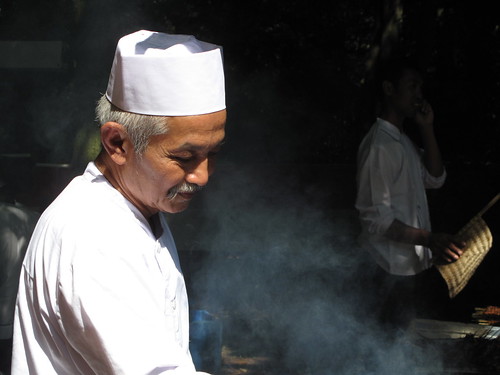
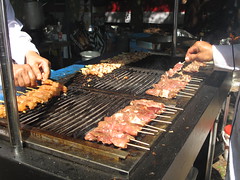
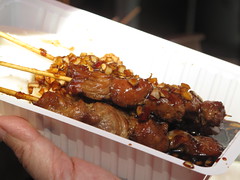
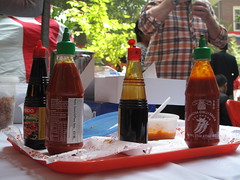
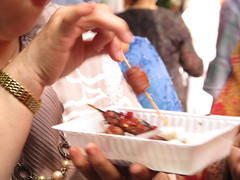
There were other dishes to sample but the Satés trumped. As did noodles. or Bami. When you ordered a bowl of the noodles, you got them in a bowl, with some hot soup ladled over and topped with meatballs or tofu, followed by veggies and then crispy onions, chili or sambal (hot chili sauce/paste). If you wanted some Kroekpoek (Prawn crackers), you got them too – in a variety of colours and shapes. If you wanted freshly steamed rice, you were in luck, for in Indonesia, there is never a shortage of rice…or noodles. And even smiling faces.
So that was the first stall only. I was full…with a little space for Tjendol which I didn’t understand at first. It sounded like it had a lot of savoury elements till I tasted it. And doffed my hat to the ingenuity displayed in this drink-dessert, which is made of fruit, caramel syrup and coconut milk, assembled in a cup. The amazing thing apart from its heavenly nature is that the ingredients layer themselves to paint a very pretty picture and once I watched it being made, I vowed to myself that this would make a repeat appearance, in my kitchen someday soon.
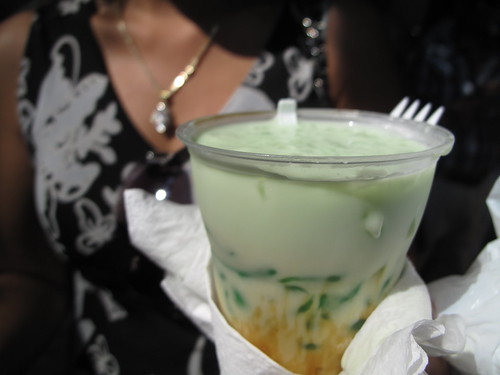
It is quite easy to assemble (if not make). First, you spoon in some green mung bean jelly into a cup, followed by a spoon of caramel or two. Then you top it up with some light coconut milk and finally add some jackfruit. And then it is ready. To rock and look pretty.
I did glimpse other varieties – made with black jelly; and with young coconut shavings and rose syrup, all topped with coconut milk. Can you imagine the taste of this cool, creamy drinks on a steaming hot summer’s day?
By the time I was done with the drink, I was done. Finished. No space for anything else. It kind of reminded me of how my life began as a food-eater. This time though, I didn’t cry. I knew I wouldn’t be able to fit another thing in so I focussed on what else was going on around me.
Like how the peanut sauce for Gado-Gado is made…traditionally. Ground peanuts in a bowl-like mortar, crushed to bits with some dark shrimp paste mixed in, a sprinkling of tamarind water, some palm sugar and chilies and then it is ready to go on some rice, tofu and veggies, wrapped in a brown paper cone. I watched the ‘artist’ put it all into the paper bag and when she was done, she topped it with some pieces of young (green) mango and then with a scooped-out side of a Green mango, she ladled the sauce into a little bag and handed it over to the person buying….with my mouth watering!,
There was no shortage of foods to be found wrapped in Banana leaves – steamed coconut milk puddings with ripe plantain cores, long strips of fish, ribbon-tied resembling weird treats for Palm Sunday…all reminded me of Nigerian foods. So far in distance and yet so close in palates.
Cakes – round and layered, green and brown.
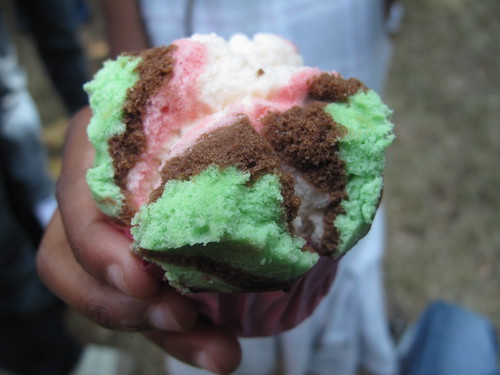
Spring rolls (Loempia), Fried egg squares, Coconut balls, with sugar and syrup. Vegetable fritters and all for a little price.
And have I mentioned the decorated people?
It was a terrific day out.
With loads to take away! And so dinner that evening consisted of ehmmm…Satés and so did breakfast the next morning.
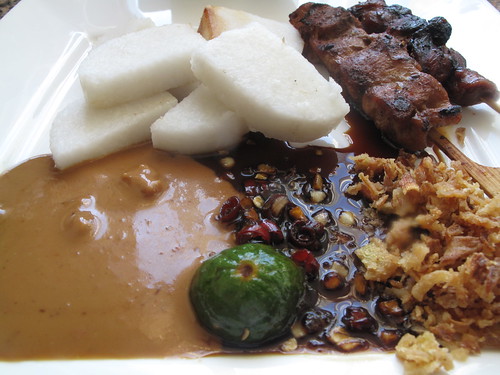
If I’m not Pro-Indonesian, I don’t know what I am! My heart’s been captured…and my tummy too!
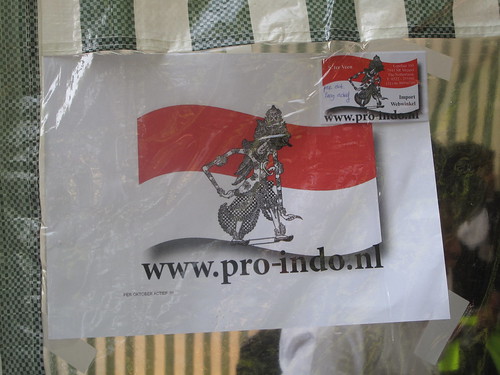
Sampai Jumpa Lagi (Till we meet again, in Indonesian)


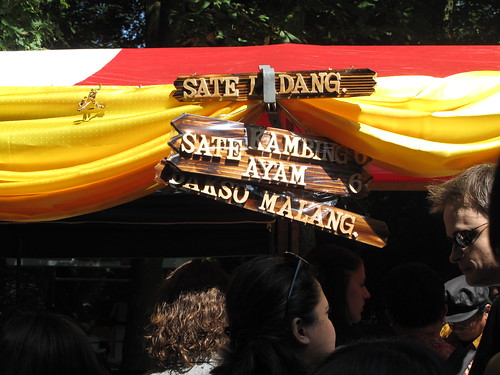
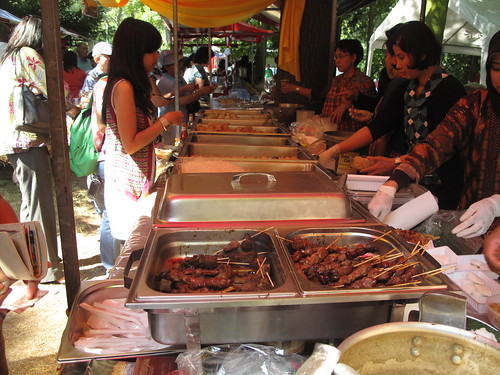


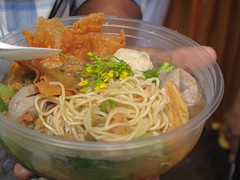
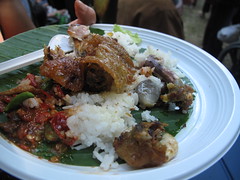
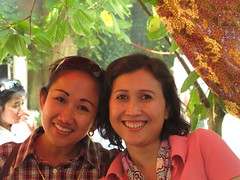
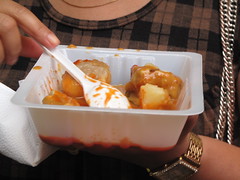
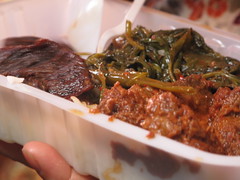

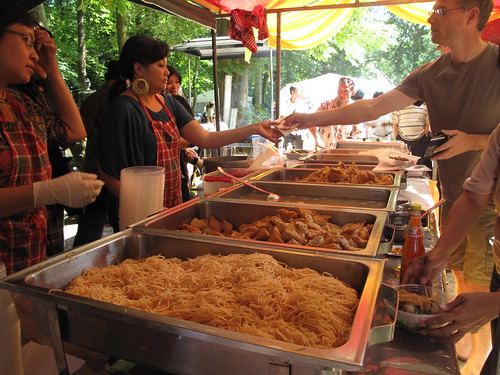
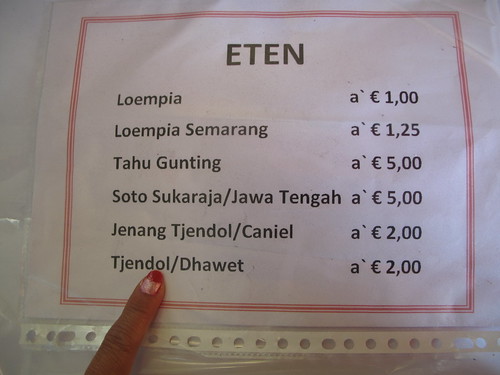
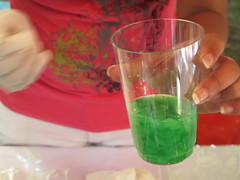
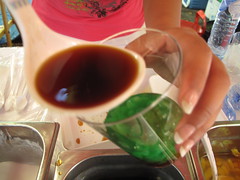
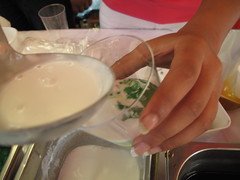
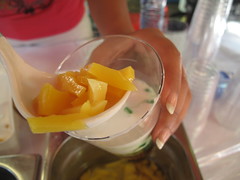

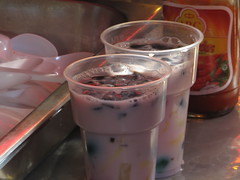
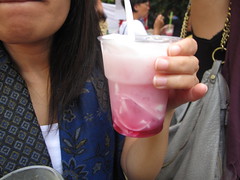


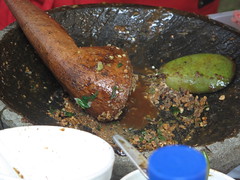

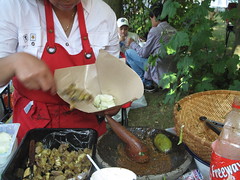
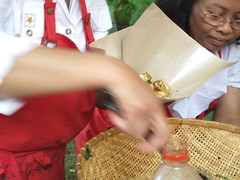
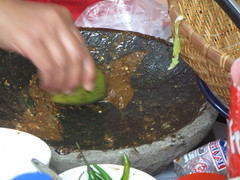
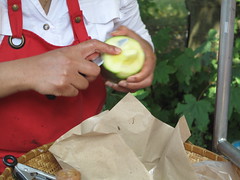
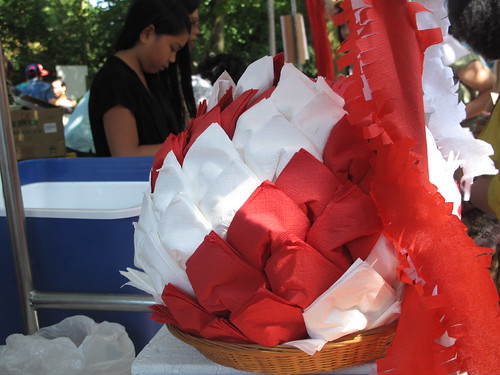
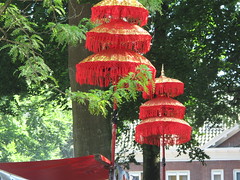
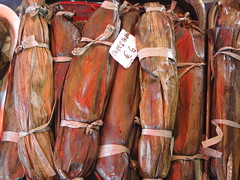
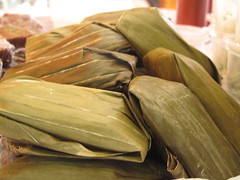
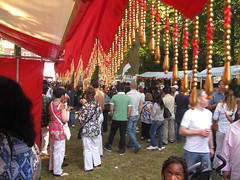

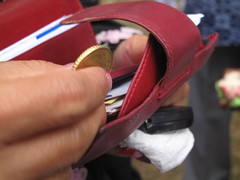

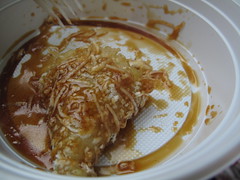
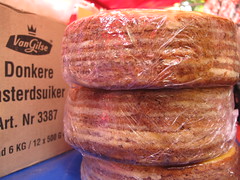
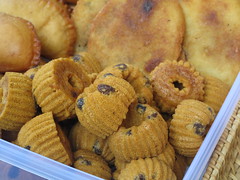


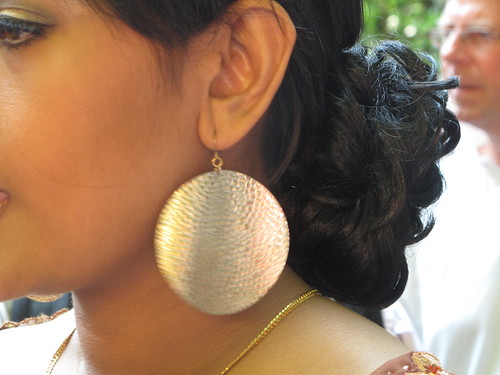
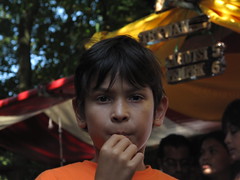
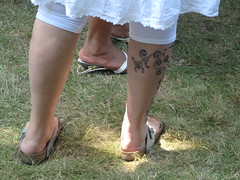
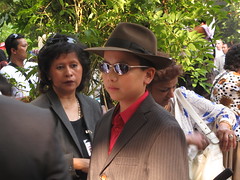
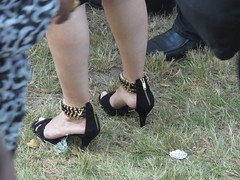
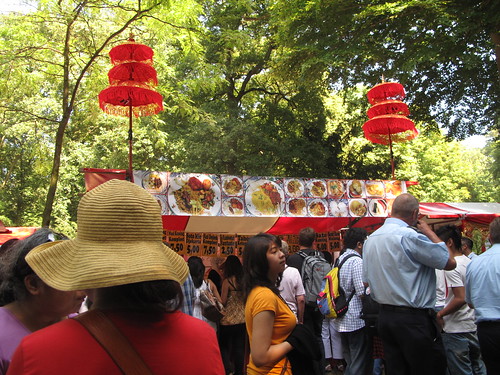

Leave a Reply